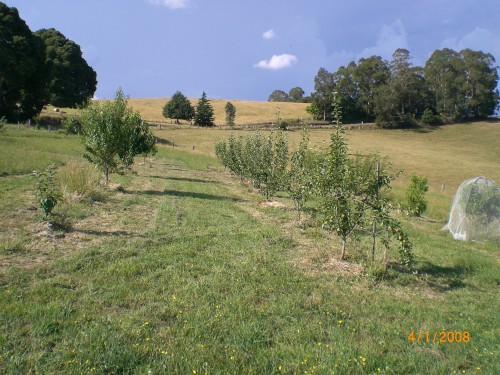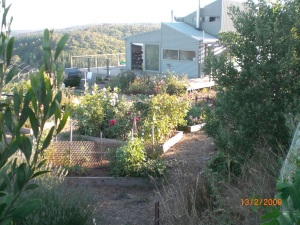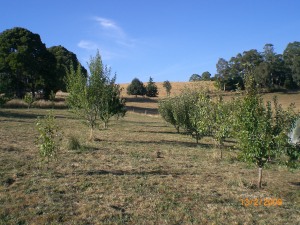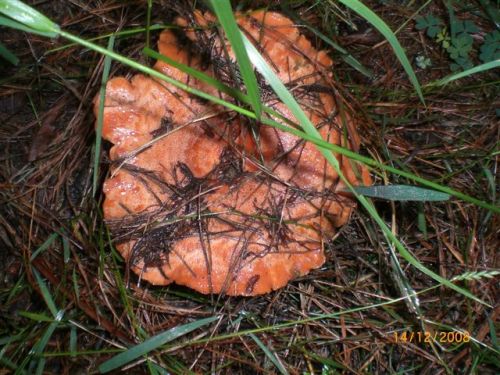
Midsummer in the main orchard paddock
As well as the chestnuts, we have started up a cool climate orchard with a range of fruit trees, soft fruit shrubs, and a few other nut trees. Over this summer I’ll set up some pages for some of the season’s star performers (the kiwis and the gooseberries look promising this year), along with some of our newest additions (the perry trees, which are supposed to get enormous in about 50 years) but here’s a broad overview of what’s in the ground.
APPLE (Pomme de Neige, Peasgood Nonsuch, Red Fuji, Staymans Winesap, Granny Smith, Pink Lady, Gala, Akane, Bramley’s Seedling, Kingston Black, Mutsu, Somerset Redstreak, Michelin, Bulmer’s Norman, Grimes Golden, Frequin Rouge Amer, Cox’s Orange Pippin, Stewart’s Seedling, and Summer Strawberry)
PEAR (William, Packham, Beurre Bosc, Corella)
PERRY PEAR (Gin and Green Horse)
APRICOT (Moorpark)
PLUM (Greengage, Prune D’Agen, President, Coe’s Golden Drop)
PLUCOT
NECTARINE (Goldmine)
CHERRY (Sunburst, Napoleon)
PEACH (Taylor Queen, Anzac)
MEDLAR
GOOSEBERRY (Captivator)
BLACKCURRANT
REDCURRANT
LOGANBERRY
THORNLESS BLACKBERRY
THORNLESS YOUNGBERRY
MULBERRY (English Black)
BLUEBERRY (Denise, Northern, Blue Rose, Brigitta)
JOSTABERRY
QUINCE (Smyrna)
KIWI (Haywood)
POMEGRANATE (Wonderful)
STRAWBERRY (Cambridge Rival)
WALNUT (Hartley, Tehama)
ALMOND
CHESTNUT (Red Spanish, Purdon’s Pride, De Coppe Marone)
HAZELNUT
OLIVE
LEMON (Meyer)
CHINOTTO
ORANGE (Seville)













